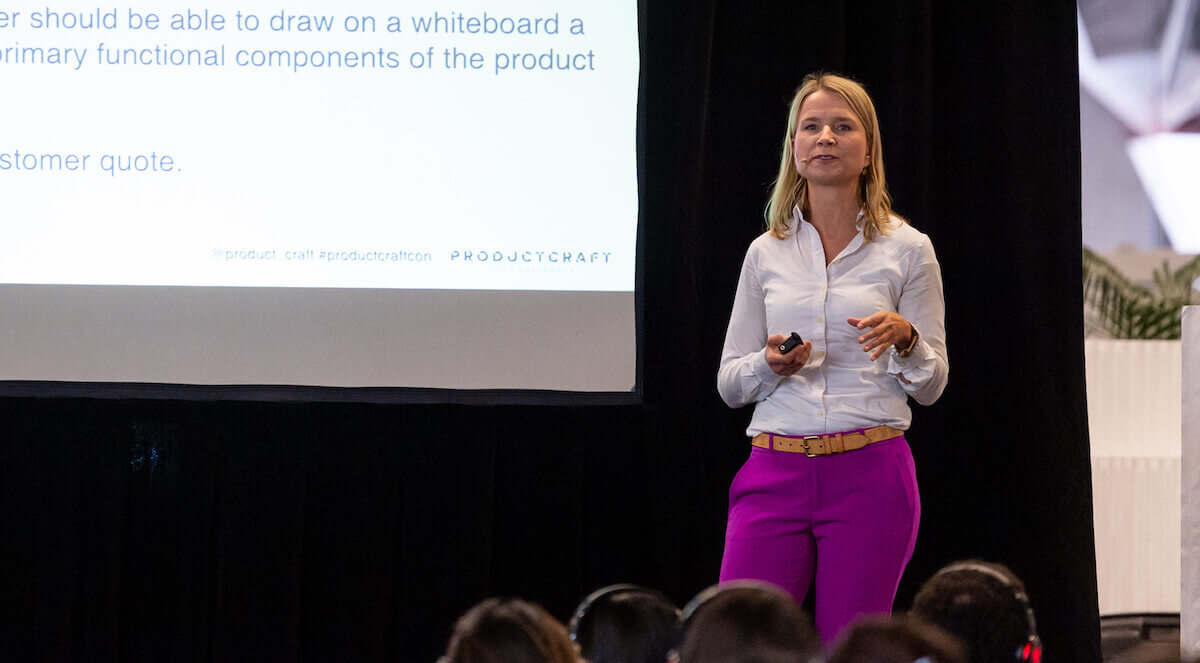When I worked as a news reporter, the most common questions I received about my job revolved around the press release. Is it necessary? Is it relevant? Do you even read it?
And my answers were always a resounding yes. But not for the reasons you might think.
I certainly didn’t need a press release to do my job—I just needed information and access to people who could provide it.
Press releases are necessary because they help companies get their message straight and get consensus around that message. They mark a point in time for a company and cast a vision for what a product, program, or initiative can become.
That’s why I’ve always enjoyed hearing about Jeff Bezos’s famous Working Backwards process for new product development at Amazon. One of the most important parts of that process is the mock press release that product managers are required to write to help think through the potential impact of their ideas.
Working Backwards From a Fuzzy Concept
At last month’s ProductCraft conference, Maiken Møller-Hansen, head of product of Amazon’s Alexa Mobile, went deeper into this process. She retold the story behind Fire TV, which she helped to launch as principal product manager back in 2014. It all started with a question from Bezos: “What are we doing about over-the-air TV?”

While the answer at the time was ‘not much,’ Maiken’s boss assured Bezos that her team had a concept in the works. Enter the Working Backwards document.
In most cases, the Working Backwards document was an exercise once Maiken’s product team knew what they were going to build. But in this case, they hadn’t spent much time thinking about it.
Turns out, the exercise works just as well when the product vision is a bit fuzzy: Start with the customer and work backward. Here are the steps Maiken took:
Immerse and Ideate
In Maiken’s case, immersion means getting close to customers through a discovery process—she prefers the Jobs-To-Be-Done framework. It means spending time with potential customers, especially the ‘super users’, and understanding the jobs they want a streaming device to do for them, and the unique value Amazon could bring to their lives. According to Maiken, immersing yourself in the problem space and in the shoes of the superuser you’re trying to serve can push the product or service to the extreme in ways an average user might not.
Host an Initial ‘Hardcore’ Brainstorming Session
Start by creating conditions that allow people to think and speak freely. This doesn’t start with the disclaimer of “no bad ideas”—in Maiken’s experience, people don’t want to put themselves out there, even with that in mind. Maiken aligns to Google’s research around productive teams, working to create team psychological safety during brainstorming.
That’s achieved by focusing the team on curiosity— learning and asking questions—rather than what it will take to execute on the vision. The outputs are key components of the Working Backwards document: a press release that helps to cast a vision for the product impact, as well as a series of FAQs.
Create the Working Backwards Document
Maiken means document in the very literal sense. Working Backwards documents are a six-page narrative memo. They start with a press release meant to capture the idea as customers might see it, using language they’d understand, visuals they’d get excited about, and questions they might ask.
Product teams brainstorm the headline they’d like to see atop the eventual announcement, the details that make this product unique from the competition, and a dream customer quote about the value of the new product or service.
Perfect Your Idea Through Document Review
Relevant stakeholders then attend a document review, where they spend the first 20-30 minutes reading the document silently as a group. This ensures everyone has time to read it, and starts on the same page for discussion. Then they address key three questions to ensure the product vision is sound:
- Do we all understand the product vision?
- Can we improve on it?
- Are we excited by it?
The answers to these questions help to inform updates to the document. The team then presents a final version to Bezos and other executives, after which work can begin.
The power of this process is evident at product launch, when a final press release is issued to the media. In the case of Fire TV, the product description and vision, even down to feature-level details, were strikingly similar to what was described in the mock version developed during the Working Backwards process.
While press releases can be viewed as a chance to summarize work that has been done, in the case of Amazon and a growing number of software organizations following in their footsteps, these documents help inspire and guide work to be done.

